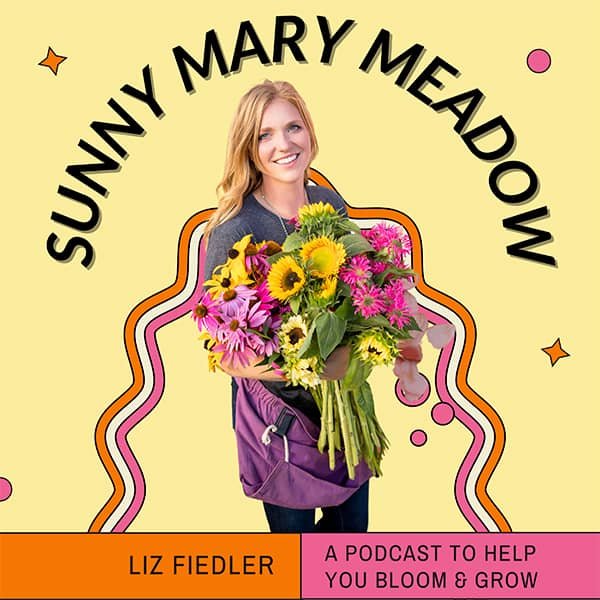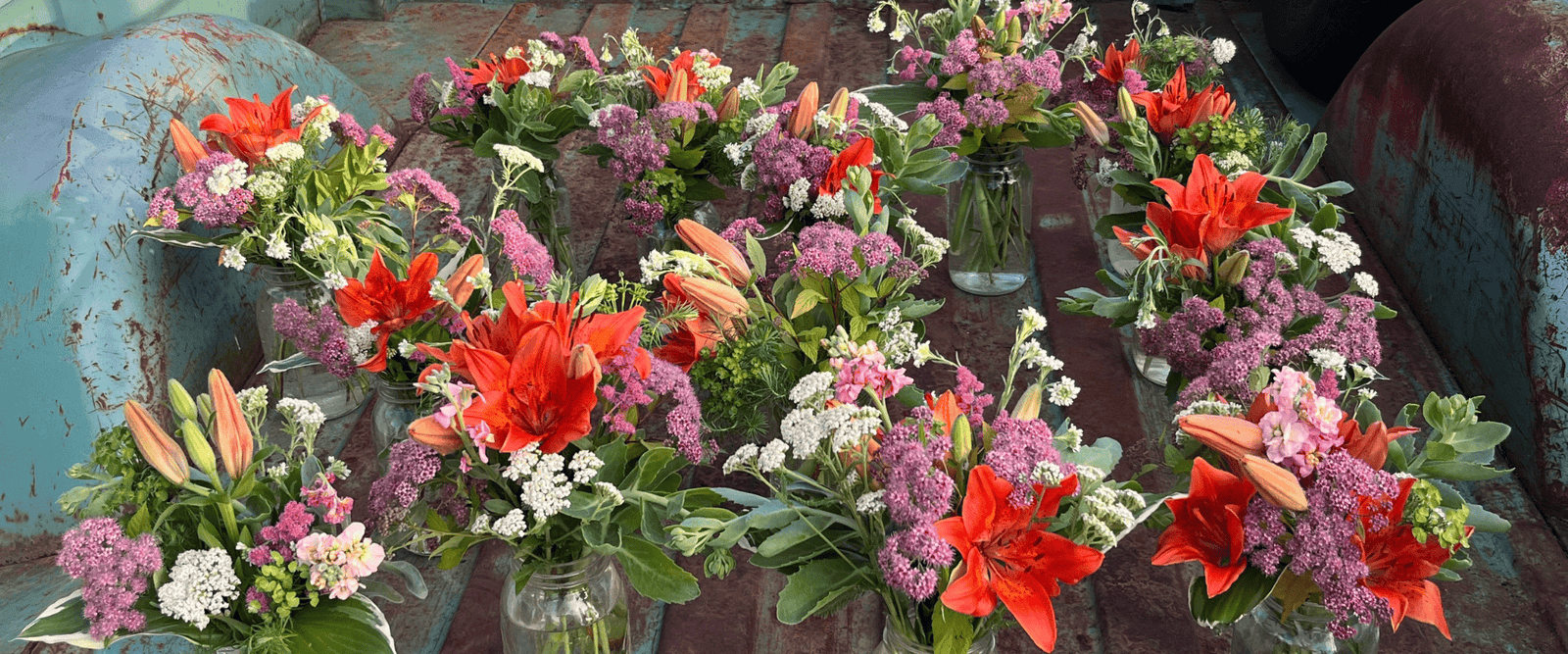
This week we are discussing cool flowers, or what he calls “hardy annuals.” This is my fourth season growing as a business and selling flowers. I didn’t go to school for horticulture, and I am not an expert.
I’ve read a lot of books. I’ve watched a ton of YouTube videos, and I’ve spent a lot of time on my local extension website. However, I think what resonates with you guys is the fact that I’m relatable and real. I’m assuming most of you didn’t go to school for this either, so the level that I am explaining from is based on my experience, and I hope that it’s an attainable goal for you within a year or two to be where I’m at. I don’t think I will ever write an expert book on how to grow cool hardy annuals. That’s not my goal, but I do want to speak from my experience of doing what the experts say.
Again, I have spent 20+ hours reading about this and watching YouTube videos, and taking some online workshops. I’ve paid for a couple of online workshops. I’ve taken some free ones, even come taught by the same author that I’m about to talk about. Everything I’m going to try to explain in a relatable 25-minute episode took me dozens of hours of reading and years of trial and error to figure out. I always welcome feedback, and I am just learning as I grow. I’m learning through it with you all, and I’m going to talk about what I have tried or what I’m about to try this season. I’m going to discuss what is theoretically supposed to work and add a lot of these practices this season.
The bible of growing cool hardy annuals is by Lisa Mason Ziegler, and she is a wealth of knowledge. Here is her book.
I personally have conservatively spent over 100 hours cumulatively listening to her. I have steamed so many of her free talks. I’ve bought gardening tools and seeds from her to support her business. In her book Cool Flowers, she talks about the magical formula to having flowers before everyone else – and that is growing cool flowers.
A reminder of some vocab – there are “tender annuals” that we talk about all of the time, which live for one year and they don’t survive cold temperatures. You plant them after a frost has passed (here, that’s on May 15th) and the soil is warming up, and these flowers prefer to grow in the heat. Those are sunflowers, zinnias, cosmos, basil, a lot of your herbs, and a lot of your vegetables.

Now, we discuss hardy annuals – the ones we’re talking about in this blog post. They live for one year just like any other annual, but they can survive the cold temperatures much better. Depending on your zone, many are planted in the fall to overwinter and produce blooms the following spring and summer. They prefer cooler growing conditions. That exact plant isn’t going to come back year after year, but it will go to seed like a regular annual, and it will drop seed, and then hopefully, the goal is to germinate in the early spring once the ground is thawed. Even if it gets down to 20° at night, many can still germinate and produce another plant in its place. This is what I am most excited to experiment with this type of flower.

I have described this in previous episodes, but I have 18 rows in my YouPick section, and I’m hoping to have those rows be consistently the same thing or just alternate between a couple of flowers when it comes to the heat-loving plants. However, my goal is that I will have a row of snapdragons, bells of Ireland, Dara, false Queen Anne’s lace, all of the cool flowers… and then toward the fall, I will let them just go to seed rather than cutting them all off. Then, in the spring, those little seedlings will hopefully just be popping up and I can transplant them and not have to plant a ton of new ones every year of those. I’ll keep them in the same spot. That’s a huge benefit of having a large growing space like I do. I hope it saves a lot of time, work, and money, in the long run, to grow these with nature.
I have learned so much from this book, but here in Zone 4B, I don’t think it will work to really push the boundaries. A lot of these seeds are to be planted “as soon as the ground can be worked,” which basically means you can get a shovel in there, add your compost, mix it in, and plant your seeds. In 2022 I planted my cool hardy annuals around April 15th, and I hope in future/subsequent years that are more like April 1st. However, as I record this episode today, April 3, 2023, that’s not going to happen. There is still at least 6” of snow everywhere, and I cannot see any ground anywhere. It is starting to rapidly melt, but most years, our snow is entirely gone by early March. We do sometimes get snow, but it melts within a few days. This is an unusual year. These plants do fine with a bit of snow on top, but they can’t germinate if the ground is still frozen solid and there is 6” of snow on top.
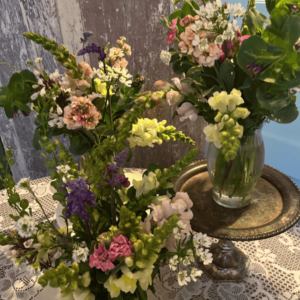
A lot of these cold hardy flowers bloom mid to late June around here, like orlaya, snapdragons, bupleurem, and stock. In this book, she says you can plant 6-8 weeks before your last frost. I think the most we can push that envelope is 3-4 weeks because of the huge amounts of snow we get here in MN. I also don’t think it would work well to overwinter in the fall. We get so cold for so long, I just don’t think it’s in the cards for us. She starts them from seed around August 1st as it’s starting to cool down a bit, and transplants out so they are about 8 weeks old once frost hits. She puts them in a low tunnel and puts a ton of straw and leaves for insulation, and hers do just fine over winter.
Here in Zone 4B, they would die. There’s no way that would work, and that’s ok. So, we need to do our best to get them in the ground as soon as possible in the early spring. My goal for next year, since it didn’t happen this year, is to have low tunnels of poly/plastic on a few of my rows to start heating up the soil sooner.

A huge perk to doing this would be to get blooms a few weeks early. My heat-loving annuals aren’t usually blooming until after the 4th of July, so this would give me a bit of a season extension. However, it also goes later into the fall as well, extending the season that way. When my zinnias, cosmos, and dahlias all die when it gets down to 31 degrees, a lot of these snapdragons and salvia are just kicking out more blooms again.
An additional perk about these cool hardy annuals is that some of them are “one and done,” like stock and bupleurum. Once they’re finished in early July, I can drop sunflower seeds in their place that have a short day to maturity and get double the crop off the same ground. It spreads out the planting, and it spreads out the cleanup. It keeps my bouquets changing as the season goes on, and so many of these will also have a second flush (like snapdragons) in the fall when it gets cool again.

One issue I did run into last year was adding too many new flowers at once that I had never grown before. They started germinating right around the time that all of the weeds did, and since I didn’t have experience growing these, I didn’t know what the new plants would look like. I literally had to Google “orlaya plug” or “nigella seedling.”
Here are some examples and notes on some that I grow:
Ammi: This is a really pretty green and white circular-looking flower it looks a lot like oyrlaya but with stronger and longer stems.
Oryla: This is a very pretty whimsical option, but you have to be careful of the side stems wiling.
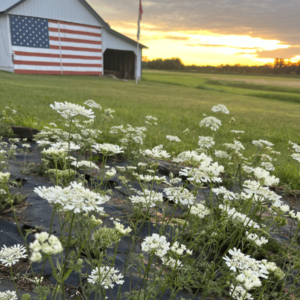
Bells of Ireland: I have both direct seeded and transplanted these but learned that they need to be planted sooner in the year. They don’t tolerate heat well, and I think the first year I did them, I got about five usable stems in vases. I hope to always have my “Bells of Ireland” row and just allow them to go to seed so I can let them grow up in subsequent years. I think I would then ditch the fabric if they grew thick enough and see how that all works out.
Stock: These flowers smell heavenly. You do have to start them in seed trays (or buy plugs) and transplant them out. They don’t love the heat, so that means I usually plant them in mid-April. This year I didn’t get them out until about May 10th, and I have no idea if they will bloom or be a bust.
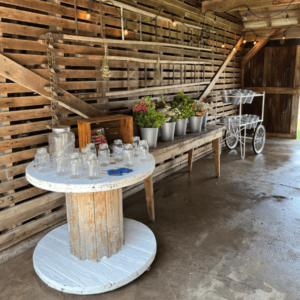
Bupleurem: These are “one and done,” as they don’t keep producing flowers after you pick them. They were an absolute workhorse for me from late June through late July of 2022, and I just simply direct seeded them into the ground.
Delphinium: These tolerate the cold really well. I started a tray of them there down in my basement and then ordered 36 plugs of them as well, and I am hopeful that they will keep on producing for me every year.
False Queen Ann’s Lace: This comes in a darker shade, similar to ammi. It comes in moody colors that look great in the fall.
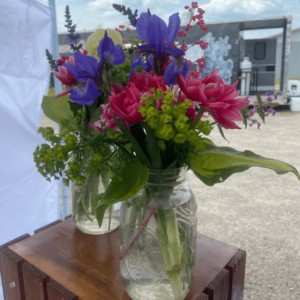
Feverfew: This is little mini daisies that multiplies like crazy. People interplant it in with daffodils and tulips because it blooms right when they’re finished.
Lisianthis: This flower deserves its own episode. I buy them in plugs, and they produce a few stems late July/early August and usually get a second flush in the fall. They look like roses – but better. I am planting these in my high tunnel because they tolerate heat well, but their roots establish best in cooler soil. They take a long time to bloom. They also have very wimpy stems, so they need support.
Nigella: This is also known as Love in A Mist. It’s a very whimsical flower – my best friend calls them Dr. Seuss flowers.
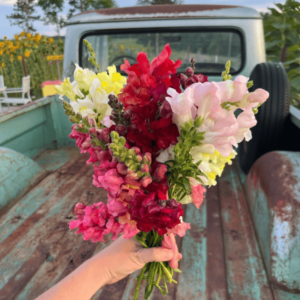
Snapdragons: These are some of my favorite cut flowers to grow. They produce tons of stems for about six weeks straight starting late June, and then take a break when everything else hits their stride, and come out with a second flush again in September when the days start getting cooler. I will always grow a ton of these.
This is always going to be a work in progress but consider incorporating some of these flowers into your garden. It extends the season of planting and picking but also gives you blooms when other stuff isn’t getting going yet.
Thanks for listening to/reading the Sunny Mary Meadow podcast/blog. I’m your host, Liz. If you like what you’re hearing/reading, please subscribe and rate us. You can also find us on Instagram, Pinterest, and Facebook.
You can subscribe to our email newsletter below. We love to hear any podcast-related feedback at our email podcast@sunnymarymeadow.com, and all other inquiries can be sent to liz@sunnymarymeadow.com.

